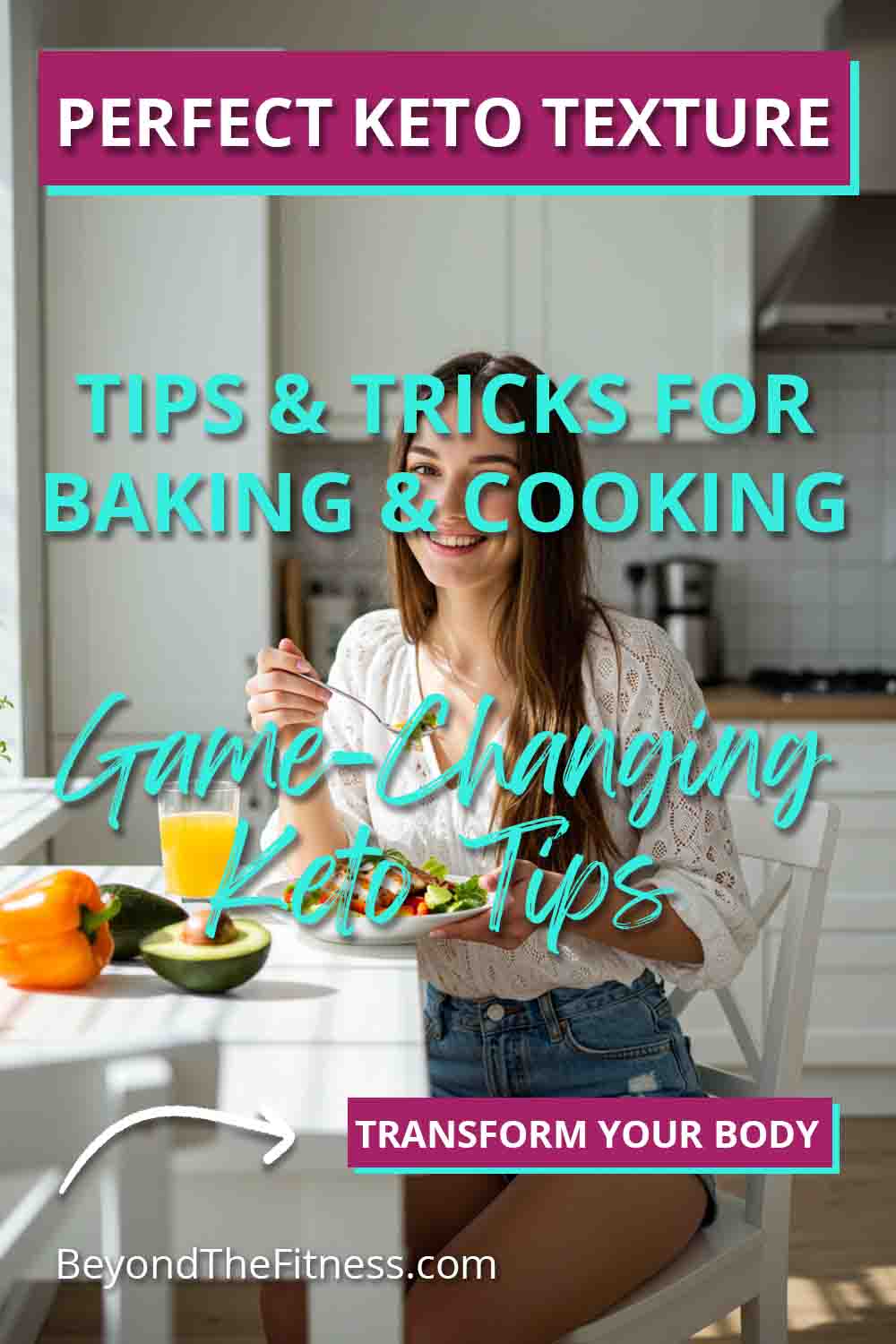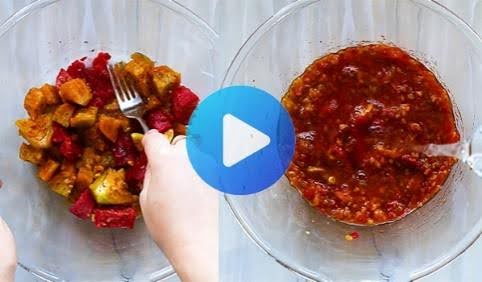When you first start eating keto, you might notice something feels a little different about your food. Especially when you try baking your favorite treats or cooking creamy sauces. That difference is often the texture. Getting the right feel in your mouth – whether it’s chewy, crispy, smooth, or fluffy – can be tricky without the usual ingredients like sugar and regular flour. But don’t worry, I’m here to help you figure it out.
As someone who helps people, especially women, find sustainable ways to manage their weight and feel good, I know how important it is for food to be satisfying. If your keto bread feels like a brick or your cookies crumble into dust, it’s hard to stick with it. Making keto food taste and feel great is key to making this way of eating work for you long-term. Let’s dive into the secrets of getting that perfect keto texture.
You Might Be Interested In: Delicious Keto Meals Tailored to Your Needs With Custom Keto Diet
Why Texture Matters on Keto
Think about your favorite foods. Is it just the taste you love? Probably not. The crunch of a chip, the softness of a cake, the creaminess of a soup – texture plays a huge role in how much we enjoy what we eat.
When we cut out carbs and sugar for keto, we lose some key players that create those textures we love. Flour, especially wheat flour, has gluten. Gluten is like a stretchy net that gives bread its chewiness and structure. Sugar doesn’t just make things sweet; it helps with browning, moisture, and tenderness in baked goods.
Without these, keto foods can sometimes turn out:
- Dry: Lacking moisture.
- Crumbly: Falling apart easily.
- Dense: Feeling heavy or hard.
- Gummy: Having a weird, sticky feel.
- Gritty: Feeling sandy from certain flours.
Finding ways to recreate pleasant textures using keto-friendly ingredients is the challenge. But it’s totally possible. When your keto meals and treats have great texture, you feel more satisfied. You won’t feel like you’re missing out, which makes sticking to your health goals much easier. This is super important because consistency is what leads to results, whether it’s weight loss, better energy, or managing health conditions.
Understanding Keto Ingredients and How They Affect Texture
The first step is knowing your ingredients. Different keto flours, binders, fats, and sweeteners all behave differently. Learning their personalities is key.
Keto Flours: The Foundation
Regular all-purpose flour is out on keto, so we turn to nut and seed flours.
Introducing: Benefits of Custom Meal Plans With Keto Diet
- Almond Flour: This is probably the most popular keto flour. It’s made from ground almonds.
- Blanched vs. Unblanched: Blanched means the skins were removed before grinding. This gives you a finer texture and lighter color, which is usually better for cakes and cookies. Unblanched (also called almond meal) has the skins and is coarser, which can be good for rustic breads or coatings.
- Texture Impact: Almond flour can sometimes be a little gritty if not finely ground. It provides moisture due to its fat content but doesn’t absorb liquid like regular flour. It gives baked goods a nice, tender crumb but not much structure on its own. Sifting it can help reduce grittiness.
- Tip: Look for “super-fine” blanched almond flour for the smoothest results in delicate baked goods.
- Coconut Flour: This one is very different from almond flour. It’s made from dried, ground coconut meat.
- Texture Impact: Coconut flour is like a sponge. It soaks up a LOT of liquid. Using too much can make your food incredibly dry and dense. A little goes a long way. It also has a distinct, slightly sweet coconut flavor. It can give a nice softness but needs plenty of eggs and liquid to balance it out.
- Tip: You usually can’t swap coconut flour 1:1 for almond flour. A general rule is to use about 1/4 cup of coconut flour for every 1 cup of almond flour, and you’ll likely need to add extra liquid or eggs. Always let batters with coconut flour sit for 5-10 minutes so the flour can fully absorb the liquid before baking.
- Other Nut/Seed Flours: You might also see flours made from pecans, walnuts, sunflower seeds, or pumpkin seeds. These have their own flavors and textures. They can be good for adding variety but often work best when combined with almond or coconut flour.
- Psyllium Husk: This isn’t exactly flour, but it’s often used in keto baking, especially for bread. It’s pure fiber from the husk of Plantago ovata seeds.
- Texture Impact: Psyllium absorbs water and forms a gel. This helps create a chewy, bread-like texture and provides structure. It’s great for binding ingredients together. Use the powder form for a smoother result. Too much can make things gummy.
- Tip: Mix psyllium husk powder with the dry ingredients first before adding liquids to prevent clumping.
- Oat Fiber: Don’t confuse this with oatmeal. Oat fiber is made from the hull of the oat grain and is almost entirely insoluble fiber (zero net carbs).
- Texture Impact: It adds bulk and a slightly drier, more flour-like feel to baked goods without adding many calories or carbs. It can help prevent keto breads from being too moist or dense.
- Tip: Use it sparingly, often in combination with other keto flours, to improve the structure and feel of breads and cakes.
Binders: Holding It All Together
Without gluten, we need something else to act as the glue.
- Eggs: Eggs are superstars in keto baking. They provide structure, moisture, richness, and help things rise. The protein in eggs sets when heated, helping your baked goods hold their shape.
- Texture Impact: Too many eggs can make things taste eggy or become too dense and rubbery. Too few can lead to crumbly results.
- Tip: Using just egg whites can create a lighter texture in some recipes, while using just yolks adds richness.
- Flaxseed/Chia Seeds (Flax/Chia Eggs): These are great vegan binder options. Mix 1 tablespoon of ground flaxseed or chia seeds with 3 tablespoons of water and let it sit for 5-10 minutes until it forms a gel.
- Texture Impact: They provide binding and moisture. The texture can be slightly denser or gummier than using real eggs in some recipes. Best for cookies, muffins, and denser cakes.
- Tip: Use golden flaxseed for a milder flavor and lighter color compared to brown flaxseed.
- Xanthan Gum: This is a common food additive made through fermentation. It’s a powerful thickener and binder often used to mimic gluten.
- Texture Impact: A tiny amount adds elasticity and prevents crumbliness in baked goods like cookies and cakes. It also thickens sauces and gravies beautifully. Using too much is a common mistake and leads to a slimy or gummy texture.
- Tip: Start with a small amount, usually 1/4 to 1 teaspoon per recipe, depending on what you’re making. Whisk it thoroughly with your dry ingredients to prevent clumps.
- Guar Gum: Similar to xanthan gum, guar gum is a thickener and binder derived from guar beans.
- Texture Impact: It works well in cold applications like ice cream or puddings and can also be used in baking. Some people prefer it over xanthan gum or use a combination. Like xanthan gum, too much makes things gummy.
- Tip: Use amounts similar to xanthan gum. It might create a slightly softer texture than xanthan gum in some baked goods.
Fats: Adding Richness and Moisture
Fat is your friend on keto, and it plays a big role in texture.
- Butter: Adds flavor, tenderness, and helps with leavening (when creamed with sweetener).
- Coconut Oil: Provides moisture. Refined coconut oil has no coconut flavor, while unrefined does. It’s solid at cool room temperature, which can affect texture differently than liquid oils.
- MCT Oil: Mostly used for its nutritional benefits, but it’s a liquid fat that adds moisture.
- Avocado Oil/Olive Oil: Liquid fats that add moisture and richness. Choose light olive oil for baking to avoid strong flavor.
- Cream Cheese/Sour Cream/Heavy Cream: These add fat and significant moisture, leading to tender, rich results, especially in cakes, cheesecakes, and sauces.
- Texture Impact: Fats coat flour particles, preventing them from absorbing too much water and developing too much structure, which leads to tenderness. They also add richness and prevent dryness. The type of fat (solid vs. liquid) can affect the final texture (e.g., solid fats can help cookies spread less).
Sweeteners: More Than Just Sweetness
Keto sweeteners replace sugar, but they don’t always behave the same way texturally.
- Erythritol: A popular sugar alcohol. It provides bulk similar to sugar.
- Texture Impact: It generally works well but can sometimes recrystallize when cooled, leading to a slightly crunchy or gritty texture, especially in smooth things like puddings or ice cream. It can also have a cooling sensation in the mouth. Doesn’t brown as well as sugar.
- Tip: Powdered erythritol dissolves better and is less likely to recrystallize. Combining it with other sweeteners like stevia or monk fruit can reduce the amount needed and minimize crystallization and the cooling effect.
- Xylitol: Another sugar alcohol. Behaves more like sugar than erythritol in terms of texture and browning.
- Texture Impact: Creates a softer, less dry texture than erythritol. Less likely to crystallize.
- Caution: Xylitol is highly toxic to dogs and cats, so be extremely careful if you have pets.
- Allulose: A “rare sugar” that tastes and behaves very much like real sugar but has minimal calories and blood sugar impact.
- Texture Impact: Provides softness and moisture, browns beautifully (sometimes even more than sugar), and doesn’t crystallize. Great for soft-baked cookies, caramels, and ice cream. It’s slightly less sweet than sugar.
- Tip: Because it browns easily, you might need to lower your baking temperature slightly or cover your baked goods partway through.
- Stevia & Monk Fruit: These are high-intensity sweeteners, meaning they are much sweeter than sugar, and you use very small amounts.
- Texture Impact: They provide sweetness but add no bulk or moisture. If a recipe relies on sugar for texture (like traditional cookies), simply swapping sugar for pure stevia or monk fruit won’t work well. They are often blended with erythritol to provide bulk.
- Tip: Best used in recipes where sugar’s bulk isn’t crucial (like drinks, sauces, custards) or in combination with bulking sweeteners.
Liquids: Finding the Right Balance
- Water, Unsweetened Almond/Nut Milks, Heavy Cream, Broth: The amount and type of liquid affect hydration and density.
- Texture Impact: Too little liquid leads to dryness. Too much can make things soggy or prevent them from setting properly. Heavy cream adds fat and richness along with liquid. Remember coconut flour needs more liquid than almond flour.
Top Tips for Perfect Keto Baking Texture
Okay, now that we know our ingredients, let’s talk techniques.
- Combine Flours: Don’t rely on just one keto flour. Often, a blend gives the best texture. A common mix is mostly almond flour with a smaller amount of coconut flour, maybe with a touch of psyllium husk or oat fiber for structure, especially in breads. Experiment to find blends you like for different types of baked goods.
- Sift Your Flours: This is especially important for almond flour and coconut flour. Sifting removes clumps and aerates the flour, leading to a lighter, less gritty texture. It only takes an extra minute and makes a noticeable difference.
- Use Room Temperature Ingredients: Unless a recipe specifically calls for cold butter (like for flaky pastries), use room temperature eggs, butter, cream cheese, and liquids. Ingredients at the same temperature combine more easily and smoothly. This helps create a uniform texture and prevents the batter from seizing or curdling. For eggs, just place them in a bowl of warm water for 5-10 minutes.
- Don’t Overmix: Once you add the liquid ingredients to the dry, mix only until just combined. This is especially true if you’re using xanthan gum or psyllium husk. Overmixing can activate their binding properties too much, leading to a tough or gummy result.
- Let Batters Rest (Especially with Coconut Flour): If your recipe includes coconut flour or psyllium husk, let the batter or dough sit for 5-10 minutes before baking. This gives the thirsty flours time to fully absorb the liquid, resulting in a better final texture and preventing dryness.
- Adjust Baking Times and Temperatures: Keto baked goods often brown faster on the outside before the inside is fully cooked, due to the nature of nut flours and some sweeteners like allulose. You might need to:
- Lower the oven temperature by 25°F (about 15°C).
- Bake for a slightly longer time.
- Tent the item with foil partway through baking if it’s browning too quickly.
- Check for doneness using a toothpick (it should come out clean or with moist crumbs, not wet batter) or by gently pressing the top (it should spring back).
- Cool Completely: This is crucial. Keto baked goods rely more on eggs and binders for structure than gluten. They are often fragile when hot and need to cool completely in the pan or on a wire rack to firm up. Trying to slice or move them too soon can lead to crumbling. Patience pays off here.
- Add Moisture Boosters: To combat potential dryness, especially with coconut flour, consider adding ingredients like:
- Sour cream or plain Greek yogurt
- Cream cheese
- Shredded zucchini (squeeze out excess water)
- Pumpkin puree
Top Tips for Perfect Keto Cooking Texture
Texture isn’t just about baking. It matters in savory dishes too.
- Thickening Sauces and Gravies: Cornstarch and flour are out. Try these instead:
- Xanthan Gum/Guar Gum: Start with a tiny amount (1/8 to 1/4 teaspoon) whisked into the cold liquid or blended into the hot liquid. It thickens as it sits. Add more if needed, but be cautious of gumminess.
- Cream Cheese/Heavy Cream: Simmering sauces with heavy cream reduces and thickens them naturally. Softened cream cheese whisked in adds creaminess and body.
- Pureed Vegetables: Cooked and pureed cauliflower, zucchini, or celery root can add thickness and creaminess to soups and sauces.
- Egg Yolks (Tempered): Whisk hot liquid slowly into egg yolks, then stir the mixture back into the pot over low heat until thickened (don’t boil). Great for custards and rich sauces.
- Creating Crispy Coatings (“Breading”): Miss crunchy chicken or fish?
- Crushed Pork Rinds (Chicharrones): Pulse plain pork rinds in a food processor until they resemble breadcrumbs. Excellent, crispy coating.
- Almond Flour/Meal: Often mixed with grated Parmesan cheese and seasonings. Doesn’t get quite as crispy as pork rinds but works well.
- Coconut Flour: Can be used, but use sparingly and season well. Can sometimes burn easily.
- Whey Protein Isolate (Unflavored): Some people find this creates a very crispy coating.
- Technique: Pat the food dry. Dip in beaten egg or heavy cream, then press firmly into the keto “breadcrumb” mixture. Fry in healthy keto oil (like avocado or coconut oil) or bake/air fry at a reasonably high temperature until golden and crispy.
- Pasta and Noodle Alternatives: Craving pasta?
- Vegetable Noodles: Zucchini noodles (“zoodles”), spaghetti squash, cucumber noodles, cabbage noodles. Key is not to overcook them, or they become watery. Sauté or briefly boil. Salting zucchini/cucumber noodles beforehand and letting them drain helps remove excess water.
- Shirataki Noodles (Konjac Noodles): Made from konjac yam fiber. Zero net carbs but have a unique rubbery texture and need thorough rinsing to remove the fishy smell. Pan-frying them dry for a few minutes after rinsing can improve texture. Best in flavorful sauces.
- Hearts of Palm Pasta: Linguine or lasagna shapes made from hearts of palm. Texture is firmer than veggie noodles, closer to al dente pasta. Rinse well.
- Kelp Noodles: Made from seaweed. Crunchy texture that softens when cooked or marinated.
- Homemade Keto Pasta: Often made with almond flour, eggs, mozzarella cheese (fathead dough style), or cream cheese. Requires more effort but can give a texture closer to real pasta.
- Creamy Soups Without Starch:
- Immersion Blender: Your best friend for pureeing cooked vegetables (cauliflower, broccoli, celery root, zucchini) directly in the pot.
- Heavy Cream/Coconut Cream: Stir in at the end for richness and creaminess.
- Avocado: Blend in for healthy fats and a super creamy texture (great in chilled soups).
- Cauliflower Rice: Cooked cauliflower rice blended into soups adds thickness.
Troubleshooting Common Keto Texture Problems
Even with the best tips, sometimes things go wrong. Here’s how to fix common issues:
- Problem: It’s Dry and Crumbly!
- Possible Causes: Too much coconut flour, not enough liquid or fat, overbaking, not enough binder.
- Solutions: Reduce coconut flour next time, increase liquid/fat slightly, add an extra egg or binder (like psyllium or xanthan gum), bake for less time or at a lower temp, ensure ingredients were room temperature.
- Problem: It’s Gummy or Too Dense!
- Possible Causes: Too much binder (xanthan gum, guar gum, psyllium), overmixing, not enough leavening (baking powder/soda), too much moisture, underbaking.
- Solutions: Reduce the amount of binder significantly, mix only until combined, ensure leavening agents are fresh, check liquid measurements, bake longer or until fully set, let it cool completely.
- Problem: It’s Gritty!
- Possible Causes: Almond flour isn’t finely ground, sweetener (like erythritol) recrystallized.
- Solutions: Use super-fine blanched almond flour, sift almond flour, switch to powdered erythritol or combine it with other sweeteners like allulose or monk fruit/stevia, ensure sweeteners are fully dissolved.
- Problem: It Tastes Too Eggy!
- Possible Causes: Recipe relies heavily on eggs for structure (common in some keto breads).
- Solutions: Use milder-tasting eggs if possible, add stronger complementary flavors (like vanilla, spices, cheese, herbs), try recipes that use other binders alongside eggs (like psyllium or flax), ensure baked goods are fully cooked (undercooked eggs taste stronger).
Texture, Satisfaction, and Sticking With It
Mastering keto texture isn’t just about making food taste better. It’s about making your keto lifestyle sustainable and enjoyable. When you can bake a soft cake for a birthday, whip up a creamy sauce for dinner, or enjoy a chewy cookie, you feel normal. You don’t feel deprived.
This satisfaction is incredibly important for long-term success, especially when using keto for weight management or health improvement. For many women I work with, being able to recreate familiar comfort foods in a healthy way makes all the difference. It helps manage cravings, prevents feelings of restriction, and makes it easier to stay consistent day after day. Consistency is where the magic happens for achieving your goals. So, don’t be afraid to experiment in the kitchen. See these tips as a starting point, and adjust based on your results. You’ll find your favorite combinations and techniques soon enough.
Related YouTube Video
Final Thoughts
Getting the texture right in keto cooking and baking might seem like a puzzle at first, but it’s definitely solvable. By understanding your ingredients – how different flours absorb liquid, how binders work, the role of fats, and how sweeteners behave – you gain control over the final outcome. Using techniques like sifting, combining flours, managing temperatures, and allowing proper cooling time makes a huge difference. Don’t be discouraged by early attempts that aren’t perfect. Treat each time you cook or bake as a learning experience. Soon, you’ll be creating keto dishes with textures so good, you won’t even miss the carbs or sugar. Making keto food enjoyable is a powerful tool for staying committed to your health journey.







